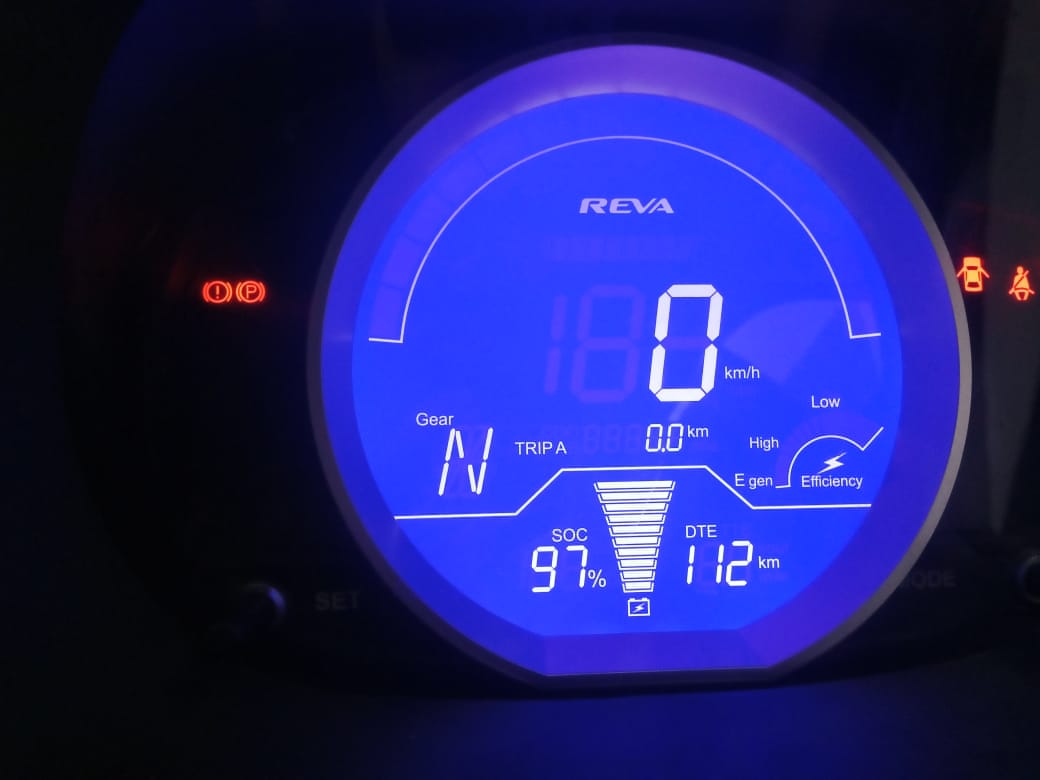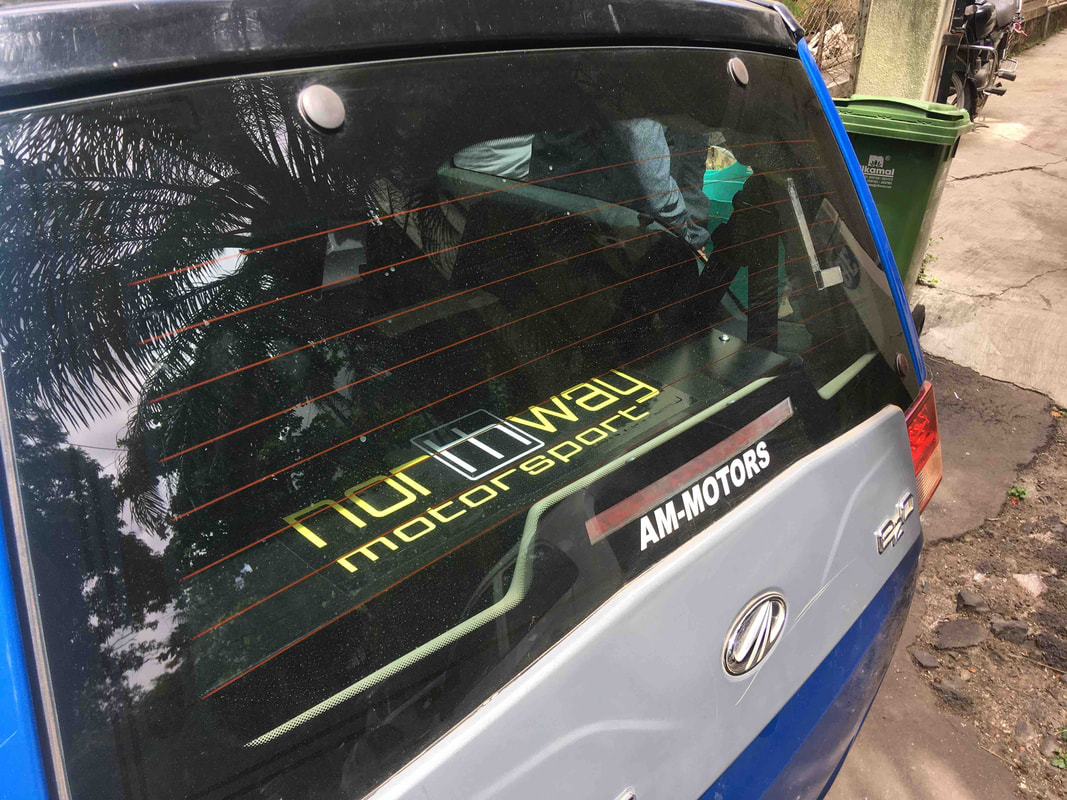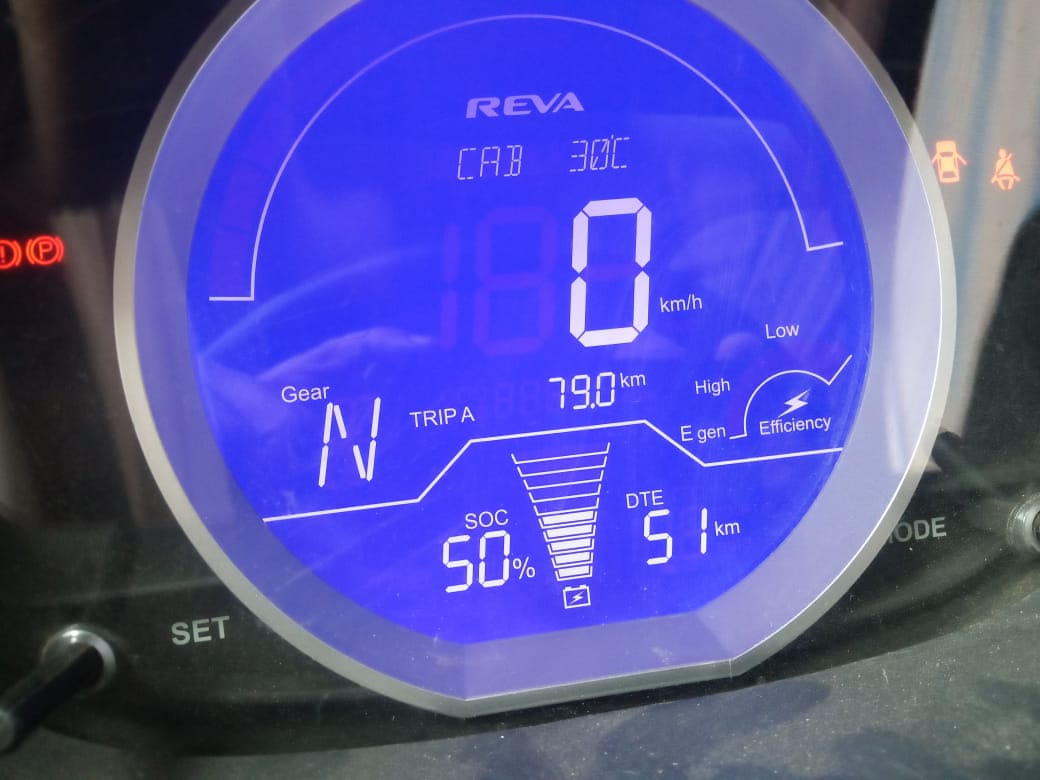In this blog, i share my thoughts on the test drive in hilly terrain on an upgraded 5+ year old e2o. We also visit and showed the upgrade to ex Mahindra Reva Battery Head, Mr Abhay Patwardhan, who's company now is making LFP batteries for electric scooters and also document his recommendations.
The vehicle had been fully charged - and was still plugged in. The funny thing about an overnight full charge for an E2O is that it is never 100%. The Mahindra charger is programmed to switch off at 6 hours. The Mahindra math is that it takes 4 hours for cells to get fully charged. An extra 2 hours is for cell balancing - as the cell siblings decide how to share the charge booty that the mother socket has delivered to the hungry kids in the last 4 hours.
The onboard computing and accessories keep on draining juice from the battery, even in switched off mode. But my guess is that drain is more like 3% a day. If you were to unplug the car exactly after 6 hours, it shows a SoC of 100%. There is an e2o user whose plug point is fitted with a timer. The timer starts the charging at 0300 hrs, so that when our friend leaves for work at 0900 hrs, the SoC is a healthy 100%! Coming back to the regular e20 charging, we see that in the space of just 4 hours there is a 3% drop in SoC. My guess is that the cell balancing is not complete - and continues even after the automatic plug-out is done at the 6 hour mark. A solution could be to continue to trickle charge the car till the power is switched off. Hemank mentioned me that if you trickle charge a car for 30 hours at a stretch, all the cells will be balanced. Worth trying on the next vacation, provision to Mahindra charging algorithm being short circuited in some way.
Drove down to Baner to pick up Kamlesh. The original idea had been to do a full 150 km circuit. I had planned the route as new Katraj tunnel - Mariyayi ghat - Saswad - Chinchwad. But we got a call from Hemank as we were approaching the Katraj ghat. He was worried about a possible calibration issue. So we decided to do an abridged ride of going up the new Katraj tunnel and coming down the old one. Uphill climbs are real tests of batteries. The ghat is a 9 km one. We started the ghat climb with a SoC of 72%. It was 62% at the top of the ghat. A drain of about 1% per km - which was a wee bit more than what I had expected. With a battery pack of 19 kWH, which is double of the existing 10 kWh, a 1% SoC drain in the new pack is equivalent to a 2% SoC drain in the old pack.
Downhills are where the EV owner gets some real pleasure and peace of mind. We did the 6 km downhill ghat at a leisurely 40 kmph, with nary a foot on the brake. The regen taking care of our braking. At the Katraj signal the SoC had crept up 4% - from 62 to 66%. Again would be a good idea to check the increase in Soc with a normal e2o. Logically the conversion of potential energy to electrical energy should be the same in both cars, if you ignore the extra 70 kg battery weight in the boot. So the normal E2O should be making 8%. Will wait for someone to validate this.
The other issue that Abhay thought could create problems is in the inter-pack balancing. Now no battery pack can work without putting cells in series. Each of the individual cells is rated at 3V.
So in order to get the 48 V that drives the 19kW e2o Kirloskar motor, you will need to put 16 cells in series: 16 x 3 V = 48 V. However in the Booster car, you have now got 32 cells, with a 16 cell pack in parallel to another 16 cell pack. There is a possibility that juice from the new pack, along with driving the motor, is also juicing up the old 16 cell pack, as the vehicle is being driven.
This may result 1 + 1 being less than 2.
A validation of the 1 + 1 < 2 came at the end of our ride. We had unfortunately not been able to drain the vehicle to 0 SoC. But we had got down to 48%, which is half of the 97% that we had started with. The Trip A odometer showed a reading of 80 km. Extrapolating, we would have got 160 km for a full 100% SoC. The same car was reporting a range of about 80 km before fitting the booster pack. So the booster pack had not ended up making the range 100 + 80 km, but had merely doubled it from the existing 80 to 160 km. Disclaimer from Hemank is that he has got the car to go 200+ km with 2 bar cautious driving. But even the non boosted e2os have delivered 150 km, using frugal methods of driving. Additional information about our test drive: we drove at speeds of mostly around 40 to 60 kmph, in hilly roads, without the AC being switched on a single time. The car had power steering, which does drink up some more juice compared to the manual steering siblings.
It's a great retrofitting job. We need tinkerers like Hemank to give our cars the second life that our babies truly deserve. With so little maintenance, these kids cannot be allowed to die as young 10 year olds. I am pretty sure that these cars can live on to a middle age in car-years of about 25 or so. If that happens, it will be great for the owners, great for the environment, maybe not so great for the car companies. Which is probably the reason Mahindra dealerships have not been actively promoting replacement batteries.
So here is what I would recommend. Keep on running your e20 till you get a range that can deliver on the daily A to B journeys with a comfortable buffer. The day range anxiety starts creeping in - meet up with Hemank. Ask him to accept your old batteries as donor cells for our other e2o siblings. And get a new 9 kWH pack fitted under your seat. You will come out with a lighter, safer car.
Our small e2o community will continue to dream of their little babes routinely doing 200 km rides, but as Kamlesh put it appropriately - the E2o ain't a highway car. Let's stick to cities. 100 km is good for most of us!
Contact Northway Motorsport or
Fill the form and their team will contact you.






